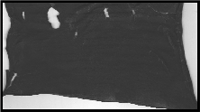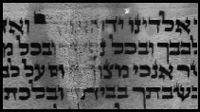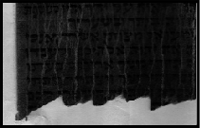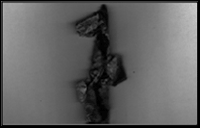

|
|
ArchivesShockersHere we wish to show various examples of shocking revelations while Tefilin & Mezuzos were checked just in the past few years, to show how anything is possible. 1
These Mezuzos demonstrates the necessity of protecting Mezuzos from the exposure of rain, snow, paint, etc. Many beautiful Mezuzos have been destroyed by this problem. Great care should be given to protect the Mezuzos, with properly closed holders, in addition to the plastic or wax paper it is rolled into. Actually, even the so called “waterproof” holders are no guarantee against water damage, but are usually more protective than the others.
2
This Mezuza became posul through insects who decided to make this Mezuza into their home. This is another reason why the Mezuza should be protected properly. 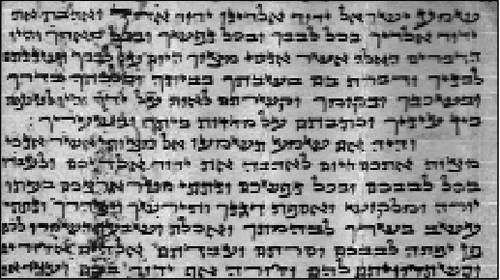 3
These Mezuzos became Posul, but “why” should be explained. Many people prefer to use lucite Mezuza cases in order for the Mezuza to be seen through. However, this custom is fine indoors not outdoors. The reason is because the sun shining through a lucite holder, intensifies the heat which can result in the Mezuza literally crumbling to pieces or piercing holes through it. Many beautiful expensive Mezuzos have been destroyed this way. 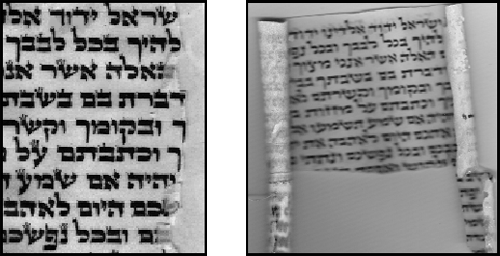 4
This Mezuza is from a school in Boro Park. A mouse managed to get to the Mezuza, and ate its way through!  5
What do you do if you make a mistake in a Mezuza? Simple! Just ask the Sofer who wrote this Mezuza - You use white-out!  6
This Mezuza was brought in for inspection together with the previous Mezuza. Here too the Sofer used white-out “conveniently” on the word metzavcha. But here this is not even the only problem. It is hard to find a single letter written properly. It would not be an exaggeration to suggest that a child would have written the letters better than this so called “Sofer”. The flaws are too numerous to count.  7
These Mezuzos are printed on paper! Even Mezuzos like these are found once in a while. 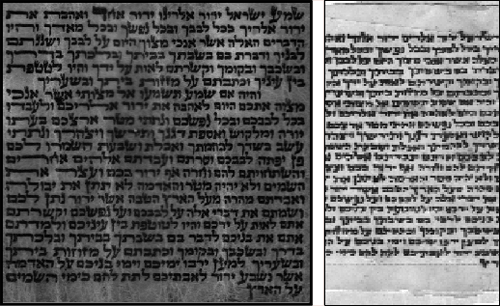 8
Remember the old fax machines? This Mezuza is a copy made on the old fax paper where the ink used to fade after a while! This is why it’s hardly legible.  9
Here is a Mezuza (if you can call it one) - a copy of a siddur! 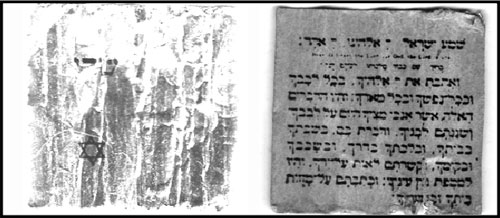 10
This shocking story happened a few years ago. One day someone asked me for a favor. He has a friend who his father - a Sofer of many years, passed away. He left a large box full of old Tefilin & Mezuzos and asked if I can dispose of it properly. I agreed. But never could I imagine what would be found there - 50 pairs of Tefilin ready to be sold - all printed copies! Here, 3 copies of 3 different Tefilin of Parshas Kadesh are shown. It is very easy to confirm that these are not hand written. Look for instance at the right side of the Mem of the word Hayamim. Note that all three have the same black spot on the bottom. Note the Ayin of the word Al as well. All of these tefilin had a stamp of approval on them stating that they are kosher! Who is responsible for this unbeleivable fraud, how many were actually sold, and what connection this deceased Sofer had with them, is still a mystery waiting to be solved. 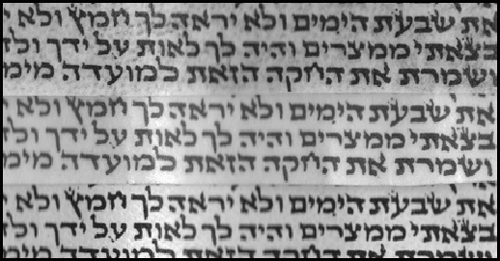 11
It is clear that a Sofer did not write this Mezuza. Many words are simply not legible, let alone halachachly kosher. 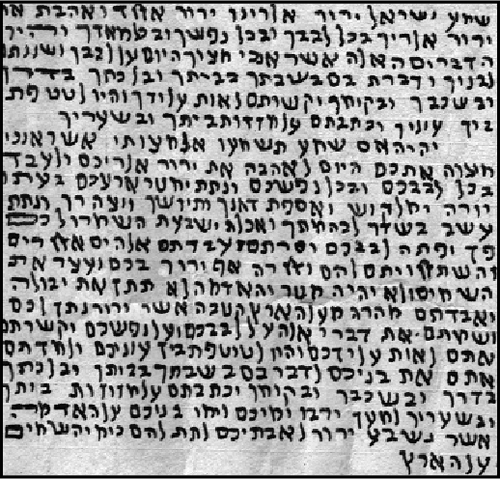 12
Do not look for any spelling mistakes in this Mezuza - for there are none. The problem here is a totally different one. The Gemara says that a Sofer should not write on the last line of a Mezuza more than the last two words Al Haaretz. This alludes to the blessing that our lives and our children’s lives should lengthen - Lmaan yirbu yemeichem veemei beneichem - just as the distance between heaven and earth is a lengthy distance - Keemei hashamayim al Haaretz. It is for this reason that the words Keemei Hashamayim should be written at the end of the line, and the words Al Haaretz at the begining of the line. In one house, three Mezuzos were found with the word Hashamayim on the last line, in addition to the words Al Haaretz. Who would want such a Mezuza, which alludes to the opposite of long life, on their doorpost? 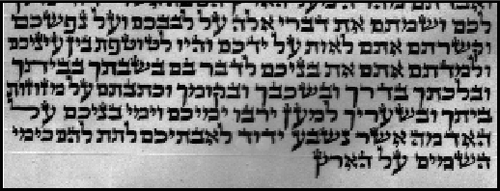 13
These Batim had attached to it a label noting who gives a Hashgacha on them. This label must be removed before being worn. A person has worn these Tefilin many years, not realizing that this is a serious problem of a Chatzitza. Actually, on the label itself it is clearly stated that it must be removed before being used, but this person obviously didn't notice. 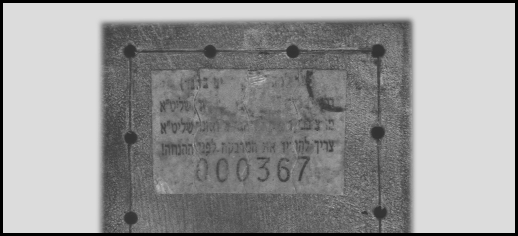 |














